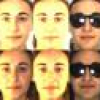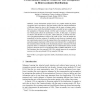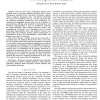6 search results - page 1 / 2 » Normalized LDA for semi-supervised learning |
CVPR
2008
IEEE
14 years 6 months ago
2008
IEEE
Linear Discriminant Analysis (LDA), which works by maximizing the within-class similarity and minimizing the between-class similarity simultaneously, is a popular dimensionality r...
FGR
2008
IEEE
13 years 11 months ago
2008
IEEE
Linear Discriminant Analysis (LDA) has been a popular method for feature extracting and face recognition. As a supervised method, it requires manually labeled samples for training...
ICB
2009
Springer
13 years 11 months ago
2009
Springer
Linear discriminant analysis (LDA) is a popular method in pattern recognition and is equivalent to Bayesian method when the sample distributions of different classes are obey to t...
ICML
2010
IEEE
13 years 4 months ago
2010
IEEE
We introduce the Spherical Admixture Model (SAM), a Bayesian topic model for arbitrary 2 normalized data. SAM maintains the same hierarchical structure as Latent Dirichlet Allocat...
PAMI
2012
11 years 7 months ago
2012
— Over the last century, Component Analysis (CA) methods such as Principal Component Analysis (PCA), Linear Discriminant Analysis (LDA), Canonical Correlation Analysis (CCA), Lap...



